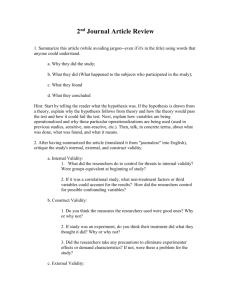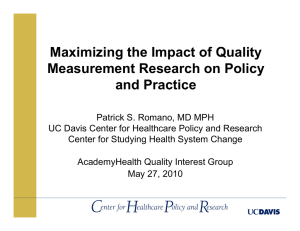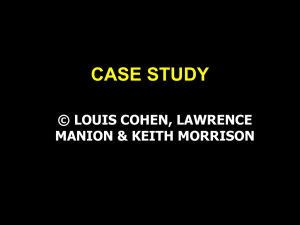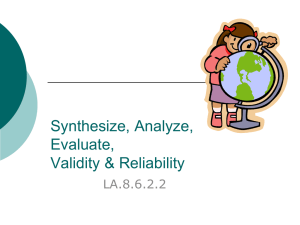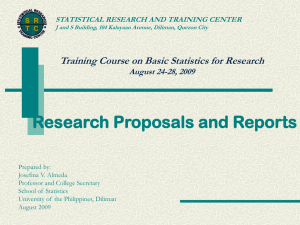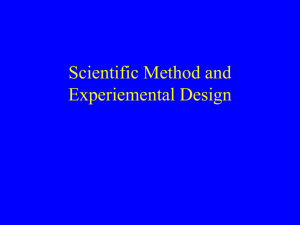CASE STUDY RESEARCH:
advertisement
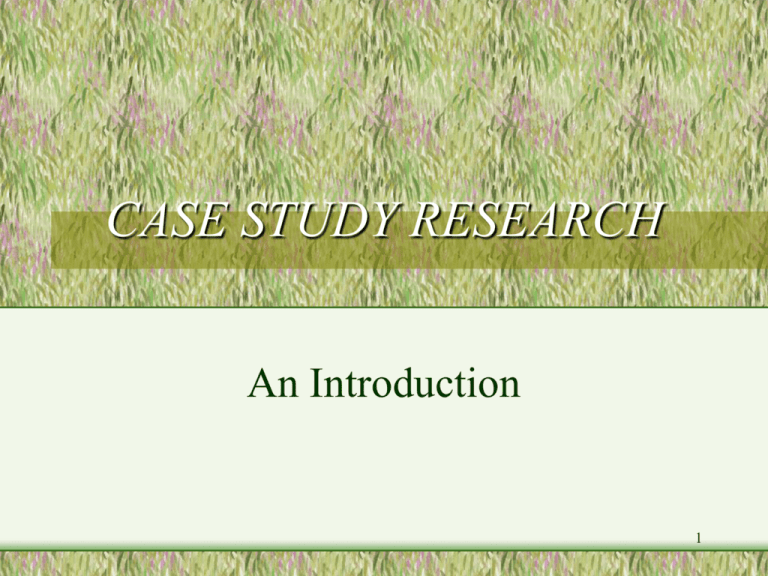
CASE STUDY RESEARCH An Introduction 1 WHY CASE STUDY RESEARCH? • The case study method is amongst the most flexible of research designs, and is particularly useful in researching issues related to sustainability and institutional systems. It incorporates a number of data-gathering strategies: •document analysis, •surveys, •participant or non-participant observation, and •participatory or action research. 2 WHY CASE STUDY RESEARCH? [cont’d] • Case study research can serve a variety of functions: exploratory (enabling researchers to get a feeling for potentially important variables and to describe phenomena in the appropriate contextual setting), for testing hypotheses or theories (relating to cause and effect in a quasiexperimental fashion), and for policy analysis (teasing out prescriptions for action). 3 TYPES OF CASE STUDIES • Most Favourable: to illustrate a theory and show it in a positive light • Exceptional: to validate or falsify a hypothesis by choosing a least favourable case • Critical Case: using a case to show the limitations of previous theories and other factors that might be operating. 4 GENERALIZING FROM CASES • One’s ability to generalize from case studies increases with the number of case studies. However, one way to overcome the limitations of a small number of cases is to choose ones that have the greatest variety of characteristics, and that encompass a range of “extremes.” 5 FOCUSES OF STUDY Case studies are classified according to the focus of study. This can include: • Individuals • Communities • Social groups • Organizations and institutions, and • Events, roles, relationships, and interactions. 6 PROBLEM OF CASE STUDY RESEARCH • Ideally, one should avoid studying an issue solely from the perspective of one stakeholder. • Case study researchers are often guilty of two additional errors: 1) presenting a mass of indigestible data, or 2) only presenting the conclusions without showing the logical inferences from evidence that make those conclusions possible. Researchers should try to be both selective and systematic. 7 TRIANGULATION There are different kinds of triangulation (ways of “trapping the answers”): • Methodological (different types of research methods) • Data (different types of data, or replication) • Investigator (using more than one), and • Theoretical (using different theoretical frameworks). 8 CONSTRUCT VALIDITY • This is establishing correct operational measures for the “things” being studied. To meet the test of construct validity, an investigator must be sure to 1) select the specific types of changes that are to be studied and 2) demonstrate that the selected measures of these changes do indeed reflect the specific types of changes that have been selected. 9 CONSTRUCT VALIDITY [cont’d] There are a number of strategies for ensuring construct validity: • Using multiple sources of evidence to see if they “converge” • Building a sold “chain of evidence” • Circulating a case study report to key informants for them to review for accuracy. 10 INTERNAL AND EXTERNAL VALIDITY • Internal validity involves establishing a causal relationship between factors or variables; causality is not the same as correlation • External validity involves establishing the domain to which one’s studies can be generalized. Unless one is studying a large number of cases, the ability to generalize is based on analytical, not statistical, grounds. 11 RELIABILITY • Reliability involves demonstrating that the operations of a study, such as data collection procedures, can be repeated with the same results (i.e. would a different researcher, using the same methods, reach the same conclusions?) • To allay concerns, one documents the steps undertaken and keeps proper records – for instance, transcribing interviews and explaining how one “coded” the results. However, no matter how “linear” one tries to be, there is always a certain amount of “doubling back.” 12 RSEOURCES ON CASE STUDY RESEARCH • Applications of Case Study Research by Robert K. Yin (Sage Publications, 2012). • Research Design: Successful Designs for Social Economics Research by Catherine Hakim (Routledge, 2012). 13

